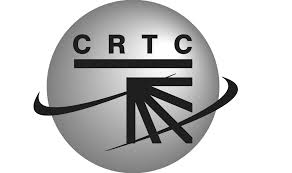The CRTC Releases Part 1 of the 2014 Communications Monitoring Report
The CRTC's annual Communications Monitoring Report will be looking a bit different this year. Instead of releasing all of the data at once, the Commission has decided to stagger the data, motivated by a desire to ensure that key sector data is available to participants in several significant hearings being conducted by the CRTC this fall (including Let's Talk TV, etc.).
The report will be staggered as follows:
- Part 1, just released yesterday, includes data on the broadcasting sector.
- Part 2, expected in late September, will include data on the telecommunications sector.
- Part 3, anticipated in October, will be the full-text of the report, including additional data on international comparisons, the Do-Not-Call list, price indices, and more.
Part 1: The state of the broadcasting industry
As you already know, the 2014 Communications Monitoring Report provides a comprehensive overview of the Canadian communications industry for the year ended August 31, 2013, and is intended to provide data and information on the industry, to assist with forecasting emerging trends and issues (News Release).
We've provided a summary of key findings as they relate to the music industry.
- In the 2013 broadcast year, a total of 5 companies dominated the broadcast system, accounting for over 85% of revenues. These 5 companies are, unsurprisingly: BCE, Cogeco, Quebecor Media, Rogers Communications and Shaw Communications.
- The broadcasting sector's total revenues this year were $17.1 billion.
- Of this, the radio sector accounted for 9% of revenues, while BDUs accounted for the largest slice of the pie at 53% and the remaining 38% of revenues come from the television sector.
Some highlights from the radio sector:
- The radio sector generated over $1,623 million in revenues in the 2013 broadcast year, a 0.4% growth between 2009 - 2013 and a 0.2% growth from 2012.
- The annual PBIT (profit before interest and taxes) for radio is $327 million, a 1.3% growth in 2013.
- While the PBIT for FM radio showed a modest growth of 1% between 2009-2013, AM radio declined 1.9% over that same period. The revenues show the same story, with AM revenues flatlining while FM revenues are growing.
- Presently, there are 1,200 radio and audio services available in Canada, with 99% of them being available over the air and 1% being subscription-based.
- This represents a 1.6% growth in the number of radio and audio services available in Canada from the 2012 figures.
- While the report provides a detailed analysis of profit margins for the different types of radio and audio services, it's important to note that overall revenues for private commercial radio broadcasters has increased over the period of 2009-2013.
- In terms of adopting new technologies, 16% of English Canadians began listening to podcasts, while their French-Canadian counterparts accounting for an adoption rate of 4%.
- In terms of streaming radio, 20% of all Canadians streamed AM and/or FM radio.
- Nationally, 50% of Canadians have streamed a video from YouTube: 43% were Francophones and 53% for English-language Canadians.
- Also interesting is the finding that there has been a steady increase in satellite radio subscriptions between 2008-2013.
And how are radio stations doing in terms of Canadian Content Development contributions?
- In the 2012-2013 broadcast year, commercial radio broadcasters operators contributed $0.032 per revenue dollar to support Canadian Content Development (CCD).
- Collectively, this represented a contribution of over $52 million to CCD, a decrease of 4.9% over the previous period.
- This breaks down into the following: $15 million in basic CCD contributions, $16.6 million in over-and-above CCD contributions and $20.7 million in tangible benefits.
You can consult the full Communications Monitoring Report here: http://www.crtc.gc.ca/eng/publications/reports/policymonitoring/2014/cmr4.htm


